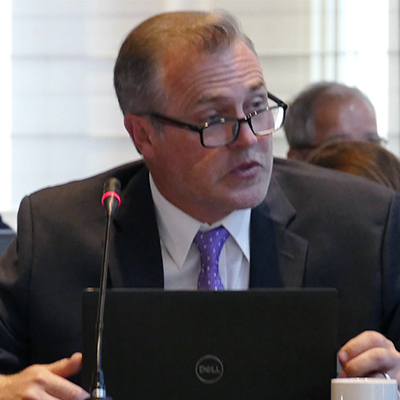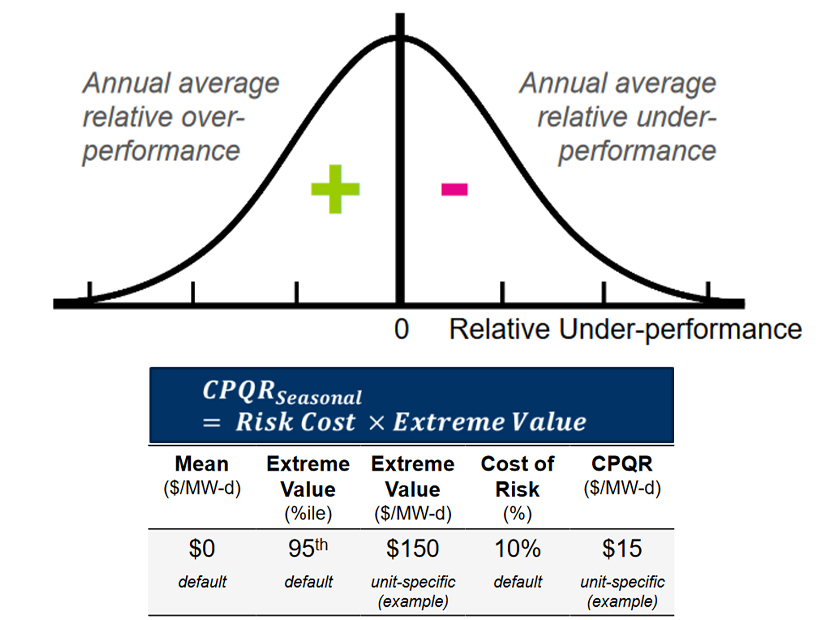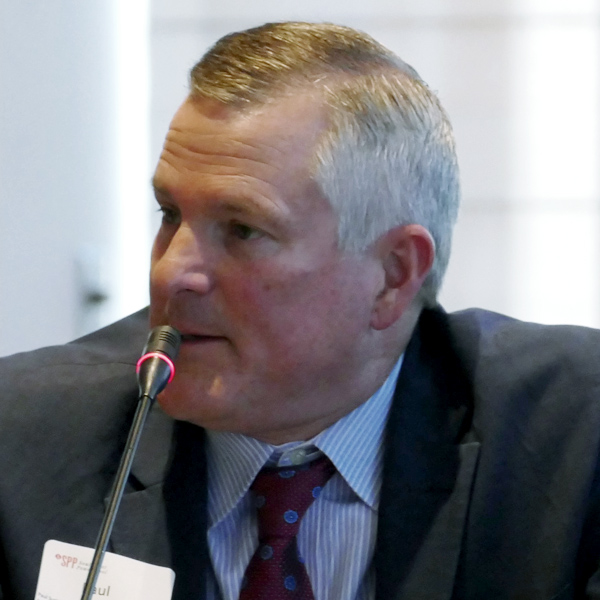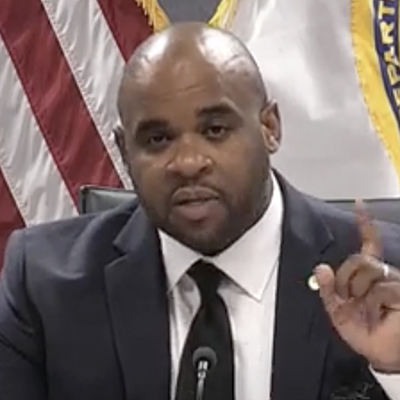WASHINGTON — FERC on Thursday unanimously issued Order 2023 revising its pro forma generator interconnection queue rules to speed up the backlogged process (RM22-14).
The rule will ensure that generation resources are able to connect to the grid in a reliable, efficient, timely and transparent manner, acting Chair Willie Phillips said at a press conference after the commission’s monthly open meeting.
“The final rule is one of the largest in FERC’s history. It represents the largest and most significant set of interconnection reforms since the pro forma interconnection procedures were created two decades ago,” Phillips said. “Our country has a severe interconnection backlog. Currently there are 2,000 GW of resources in interconnection queues, the largest backlog in history.” (See LBNL: Interconnection Queues Grew 40% in 2022.)
The rule would shift the pro forma interconnection rules from a first-come, first-served serial process to a first-ready, first-served cluster study process. It ramps up financial requirements for developers and sets penalties for transmission providers that fail to meet deadlines for completing interconnection studies. (See FERC Proposes Interconnection Process Overhaul.)
The rule also requires interconnection studies to consider grid-enhancing technologies (GETs) and sets new reliability standards for inverter-based resources.
Order 2023 comes out of the Advanced Notice of Proposed Rulemaking issued in 2021 under Chair Richard Glick, which has also produced a still-pending NOPR on transmission planning and cost allocation. (See FERC Issues 1st Proposal out of Transmission Proceeding.)
“We will not stop work on the long-term and regional planning transmission NOPR,” Phillips said. “We look forward to, in the months ahead, finalizing that proposal as well. And together … we will have the greatest transmission reforms in a generation to come out of FERC.”
All of the other commissioners praised the process around developing the final rule, with Commissioner James Danly saying that while he would have preferred looking into the six ISO/RTO interconnection queues individually, the final rule was a successful collaboration among the four sitting commissioners.
“Take me at my word when I say it because I don’t give compliments,” Danly told Phillips. “I pay you one here: You set up a set of circumstances where there was genuine collegiality amongst the offices in shaping the rule.”
Reforming the queues is important, Commissioner Allison Clements said, as many grid operators have signaled they will need additional resources soon to help keep the lights on.
“While we’re not looking to replace retiring thermal units on a one-to-one basis with solar and wind, getting these resources online, as the grid operators have told us, is critical to help alleviating their own concerns,” she added.
Clements also lauded Order 2023’s embrace of GETs, many of which are mature technologies that have been around longer than some consumer items that have long since gone out of fashion, such as floppy disks and the Sony Walkman.
Commissioner Mark Christie said the rule was a step toward unclogging the queues around the country. Ideally it will not conflict with any revisions that grid operators have made on their own, such as PJM’s, he added. (See FERC Approves PJM Plan to Speed Interconnection Queue.)
“That’s one of the issues that I address in my concurrence … the question of whether we have appropriate hold-harmless language with regard to existing reform efforts,” Christie said.
As with the old pro forma rules, ISO/RTOs will be able to seek an “independent entity” variation from FERC, and even vertically integrated utilities can get an exemption if they prove their rules are consistent with, or superior to, the new minimum standards. Some grid operators are engaged in changes that go well beyond what FERC has required with Order 2023. (See CAISO Tries to Shake up Its Interconnection Process.)
Given that the country has 2,000 GW of projects in the queue, which is double the amount of generation actually operating today, it is clear that the backlog needs to be worked through, Phillips said.
“Our government rules and regulations need to keep pace with the needs of our energy grid,” he added. “And so, while I applaud the RTOs that have moved forward with reforms, I think they’ve done it because, quite frankly, they know that FERC was moving aggressively to finalize this rule. And that’s a good thing. We want to make sure we recognize regional flexibility. What works in Alabama may not work in the Northwest, or what works in New York may not work in Arizona; we recognize that. But let me say this: No one region does every single thing that we put forward in this rule.”
Stakeholders Applaud Rule, but Await Changes on Transmission
Most initial reactions to Order 2023 were in praise of FERC for addressing the issue of clogged queues, but they also called on it to continue with its work on transmission reforms.
“Advanced Energy United and our members applaud the commission for identifying the urgent need for interconnection reform and for working diligently to put forward a final order that will start to improve the broken interconnection process,” said Managing Director Caitlin Marquis. “In light of the scope of the interconnection challenge, we also appreciate acting Chair Phillips’ recognition that there is ‘so much more to do’ and hope to see this momentum maintained with follow-up efforts by the commission to address additional interconnection reform needs.”
All were commenting based on what information FERC released at its meeting, with the order not being released as of press time Thursday evening. But AEU welcomed the commission’s decision to move away from non-financial “readiness” requirements that were unworkable while keeping provisions to hold transmission providers accountable to deadlines, with penalties growing every day they are late.
“While ACEG welcomes approval of these reforms, the best way to address interconnection delays is still to improve the planning and development of new transmission lines,” said ACEG Executive Director Christina Hayes. “As the commission begins its August recess, it is critically important that it continue to make progress on several outstanding items, including the planning and cost allocation rule. FERC has a crucial role to play in protecting the long-term reliability of our energy system, which is why it needs a full complement of members. We hope the president will expeditiously fill any vacancies so FERC can continue its important work.”
The Sierra Club also welcomed the rule, saying it was hopeful it would help grid operators clear out the 2,000-GW backlog.
“Moving these renewable generation and storage facilities from the queue to the real world is a critical step toward creating a clean, reliable and efficient energy grid, and we look forward to ensuring any process improvements here are implemented swiftly and fairly by grid operators across the country,” Sierra Club Senior Attorney Greg Wannier said.
The rule’s requirements for transmission providers to meet deadlines or face fines are a welcome new development because previously the onus was put on the developers of wind, solar and storage who were creating the demand for interconnection, Jason Burwen, a vice president at the storage firm GridStor, said in an interview.
The final rule changes how storage’s impact on the grid is studied in the interconnection process. Current interconnection planning processes often assume the worst-case scenario with storage charging at the peak demand hours, but the NOPR proposed shifting that to a more real-world use of the technology, Burwen said.
The new rules will allow storage developers to submit a business case to grid operators that lays out how the facility will actually be used, thus avoiding overestimates of their grid impacts, according to the order. Standalone storage, hybrid facilities and co-located storage can all submit such business cases, which transmission operators can disagree with if they are not consistent with “good utility practice.”
The order sets up a process in which the transmission owner explains its disagreement in writing and the storage project seeking interconnection can come back with a second attempt that address those concerns.
While storage is not as dependent on transmission expansion as wind and solar, it does need to see the grid expand to reach its maximum potential, Burwen said.
“Even these interconnection reforms … are probably a few years out from really kicking in and changing the way in which business is done,” Burwen said. “But it’s much more matching the timescale of the pain that wind, solar and storage project developers are facing as they try to build stuff and do so on the timelines that any rational investor is going to expect of them.”
RTOs React
RTOs had limited response to the order, as the text of the 1,481-page final rule wasn’t posted until Friday evening.
MISO said it is assessing how the new rules will interact with its proposal to limit queue submissions to about 73 GW annually, triple its entry fees and establish more rigorous land obligations and escalating penalty charges. (See MISO Aims for Manageable Interconnection Queue.)
“The commission has acknowledged MISO’s leadership in developing innovative solutions to the interconnection challenges. MISO appreciates the commission has codified many of them in Order 2023, and MISO is already assessing additional reforms to improve the quality and viability of future submissions,” RTO spokesperson Brandon Morris said in a statement to RTO Insider. “MISO is reviewing how the current rule can support these efforts and not slow these future reforms to help address the interconnection challenges in the MISO region.”
NYISO referenced its ongoing engagement with stakeholders to improve its interconnection processes. (See NYISO Stakeholders Still Questioning Interconnection Queue Proposal.)
“The NYISO began efforts to improve the interconnection process in 2022, recognizing the need and urgency for reform. Efforts to accommodate new technology proposing to interconnect to the grid and developing efficiencies in the process are well underway,” said Kevin Lanahan, the ISO’s vice president of external affairs and corporate communications. “As part of these efforts, the NYISO has held numerous open forums where stakeholders have provided valuable feedback and proposals.”
PJM spokesman Jeff Shields said the RTO would postpone comments until it had reviewed the order but noted that it implemented its new interconnection queue process in July. (See ACORE Report Highlights Billions of Dollars in PJM’s Generator Queue.)
“PJM expects to study the interconnection of more than 260,000 MW of mostly renewable resources. The process will speed up and streamline generation interconnection requests, improve project cost certainty, and significantly improve the process by which new and upgraded generation resources are introduced onto the electrical grid,” Shields said.
CAISO referred to its NOPR comments, which supported eliminating the “reasonable efforts” standard and imposing penalties for missed deadlines. It also noted it was the only ISO/RTO that did not report missing any study deadlines in 2022.
ISO-NE and SPP declined to comment.
Amanda Durish-Cook, Tom Kleckner, Devin Leith-Yessian, Hudson Sangree, Jon Lamson and John Norris contributed to this story.



